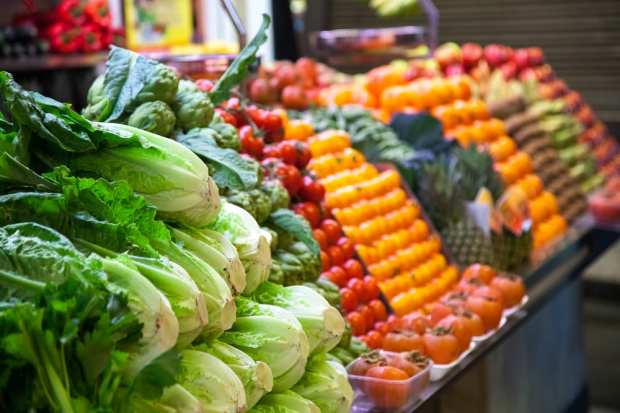Do Grocery Stores Need Happy Hours?

While in many places, the “best” time of day for a trip to the grocery store is a matter for debate, for some shoppers in Finland, the answer is easy. It’s between 9 p.m. and midnight – when grocery “happy hour” begins at S-market’s 900 stores around the nation, at which point grocery items that are scheduled to expire at midnight tumble into deep-discount mode.
“Happy hour” at the S-market store in the working-class neighborhood of Vallila happens far from the liquor aisles and isn’t exactly convivial. Nobody comes for drinks or a good time – they’re looking for a steep discount on a slab of pork.
S-market is already a discount chain to start with, meaning prices run about 30 percent below average. But at 9 p.m., that doubles to 60 percent. The move comes, according to the market, as part of its long and dedicated battle against food waste.
“I’ve gotten quite hooked on this,” Kasimir Karkkainen told The New York Times as he browsed the meat section in the Vallila S-market. By around 9:15 pm, he had grabbed a container of pork mini-ribs and two pounds of shrink-wrapped pork tenderloin for a net cost of about $4.63.
Food waste is a global environmental catastrophe – about 1.3 billion tons of food that is packaged for human consumption each year, worth nearly $680 billion, is lost or wasted, according to the Food and Agriculture Organization of the United Nations. And that doesn’t only waste the resources it takes to produce it – according to a report by the Intergovernmental Panel on Climate Change, food waste also acts as a polluting agent as it rots in landfills and gives off methane gas, a greenhouse emission roughly 25 times more harmful than carbon dioxide.
But while consumers are generally sensitive to wasting fuel or power, food as of yet doesn’t ping the ecological radar of most consumers.
“There’s been a lot of focus on energy,” said Paul Behrens, a professor in energy and environmental change at the University of Leiden in the Netherlands. “But climate change is as much a land issue and a food issue as anything else.”
That growing concern has made combating food waste a popular cause – particularly in Europe, where supermarket and restaurant chains are finding ways to limit their contributions. In the U.S., on the other hand, the matter is a little more complex.
When reviewed by the nonprofit Center for Biological Diversity last year, nine out of 10 U.S. supermarket chains were given a grade of a C or lower on food-waste issues. The only grocery in the U.S. with a shot at making the honor roll was Walmart, largely due to an effort to standardize labeling around expiration dates.
“Food waste might be a uniquely American challenge, because many people in this country equate quantity with a bargain,” said Meredith Niles, an assistant professor in food systems and policy at the University of Vermont. “Look at the number of restaurants that advertise their supersized portions.”
But in a world where grocery margins are tight and retailers – particularly brick-and-mortar players – are looking for an edge of any kind, the grocery happy hour is more than an opportunity to fight waste. In fact, according to a close reading of the Times report on the subject, grocery happy hours may not end food waste so much as change at what point the food gets wasted.
“I’ve never tried these before,” S-market shopper Harri Hartikainen said to the Times while he was adding some Kansas City-style grilled chicken wings to his shopping basket. “But it’s so cheap, if I don’t like it, I can just throw it out.”
Whether it ends waste or not, the grocery happy hour is clearly a draw to the store, and brings in consumers who are hunting value. The happy hour may not be a funds generator for S-market, but it isn’t a money loser, either.
“When we sell at 60 percent off, we don’t earn any money, but we earn more than if the food was given to charity,” noted Mika Lyytikainen, an S-market vice president. “On the other hand, it’s now possible for every Finn to buy very cheap food in our stores.”
